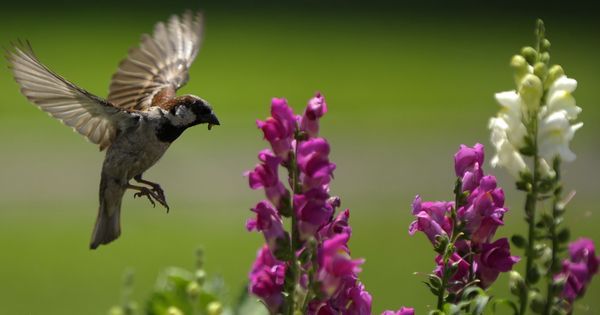EPA fears 'unprecedented disaster' for environment over Scott Pruitt's appointment to head the agency
Senate Democrats vow to fight Trump’s nominee to lead the EPA, a climate denier who has sued the agency multiple times as attorney general of OklahomaEPA staff have expressed nervousness over Scott Pruitt’s nomination, given his zealous pursuit of the agency. Photograph: John Taggart/EPA
Oliver Milman
@olliemilman
Thursday 8 December 2016
Democrats have promised to stage a last-ditch effort to thwart the appointment of Scott Pruitt as administrator of the Environmental Protection Agency, amid fears within the agency that he will trigger an “unprecedented disaster” for America’s environment and public health.
Donald Trump has nominated Pruitt to lead an agency he has sued multiple times in his role as attorney general of Oklahoma.
Pruitt has vowed to dismantle serried environmental rules and is currently involved in a legal effort by 27 states to overturn Barack Obama’s clean power plan, the president’s centerpiece policy to reduce greenhouse gas emissions.
Donald Trump picks climate change sceptic Scott Pruitt to lead EPA
“The American people are tired of seeing billions of dollars drained from our economy due to unnecessary EPA regulations, and I intend to run this agency in a way that fosters both responsible protection of the environment and freedom for American businesses,”
Pruitt said in a statement.
Trump said Pruitt is a “highly respected attorney general” who will reverse the EPA’s “out-of-control anti-energy agenda that has destroyed millions of jobs”.
Earlier this year, the president-elect said there would be just “little tidbits left” of the EPA if he made it to the White House.
Environmental groups have reacted with dismay at the nomination of Pruitt, warning that he will not only tear up much of Obama’s climate legacy but also imperil the reliably clean air and water that Americans have largely enjoyed over the past 40 years.
Democrats have vowed to fight Pruitt’s nomination, with Chuck Schumer, the minority Senate leader, promising a torrid confirmation hearing for the Republican lawyer.
Some Democrats are hopeful that a number of Republicans could join them to block Pruitt’s confirmation.
“This is full-fledged environmental emergency, this is someone (Pruitt) who is a professional climate change denier,” said Brian Schatz, a senator from Hawaii.
“This is a litmus test for every member of the Senate who believes in science. We are going to do everything to oppose his nomination, and we are confident we can do so.”
Other elected Democrats have also vowed to take on Pruitt, with Eric Schneiderman, attorney general of New York, promising to “use the full power of my office” to compel the EPA to uphold federal environment laws.
Republicans, the majority party in the Senate, have largely welcomed Trump’s pick. James Inhofe, an Oklahoma senator and a vocal denier of climate science, said Pruitt is “thoughtful, experienced and a natural pick” for the EPA administrator role. Inhofe is chairman of the Senate environment committee, which will question Pruitt prior to his confirmation.
EPA staff have expressed nervousness over Pruitt’s nomination, given his zealous pursuit of the agency.
Pruitt has fought against EPA regulations that prevent air pollution haze in national parks, methane leaks from drilling and mercury and arsenic seeping from power plants.
Analysis Scott Pruitt's EPA: a dream for oil and gas firms is nightmare for environment
Trump’s pick to lead Environmental Protection Agency has supported fossil fuel firms and sought to hobble public health regulations he will be responsible for
The attorney general has proved to be such a staunch advocate for fossil fuels that he allowed Oklahoma firm Devon Energy to use his letterhead to send a three-page complaint to the EPA in 2014.
He has questioned the accepted scientific stance on climate change, claiming in May that the “debate is far from settled. Scientists continue to disagree about the degree and extent of global warming and its connection to the actions of mankind.”
One EPA scientist, who asked not to be named, said that Pruitt risks being an “unprecedented disaster” for the natural world and public health.
Other EPA advisers warned that the agency risks being trampled under Trump’s agenda of boosting corporations and eviscerating climate action.
“Pruitt doesn’t believe in the mission of the EPA, which is to protect human health and the environment,” said Lisa Garcia, vice-president of Earthjustice and a senior adviser to the last two EPA administrators.
“This isn’t a business agency, it’s an environmental agency. It’s scary to have someone who doesn’t believe in the mission of the EPA walking in to run it. I expect they will choke the funding of the EPA and stop enforcing laws. The work of the agency will basically come to a halt.
“People at the EPA are in shock, they are worried about carrying out its mission. People are worried about how they will do their jobs, even people who voted for Trump. They didn’t expect this. Clean air and water, safe places for our children to play – these things should be bipartisan. They should be above politics.”
Trump has previously called climate change a “hoax” and threatened to end all spending on climate change and clean energy, but environmentalists saw a glimmer of hope when the real estate magnate met with Al Gore, the former vice-president, and the actor Leonardo DiCaprio. Both regularly call for action to reduce greenhouse gas emissions.
The nomination of Pruitt, however, presages a lengthy battle between the Trump administration and green groups.
“Donald Trump has made it clear that he intends to wage war on clean air and clean water,” said Benjamin Schreiber, climate and energy program director at Friends of the Earth US.
“Trump has also put our climate in peril and shown he is out of step with the American people. With this EPA pick, Donald Trump is putting all Americans at risk.”
Source: https://www.theguardian.com/environment/2016/dec/08/epa-scott-pruitt-disaster-
environment-senate-democrats
More news
Topics
US Environmental Protection Agency (EPA)
Trump administration
US politics
US Senate







